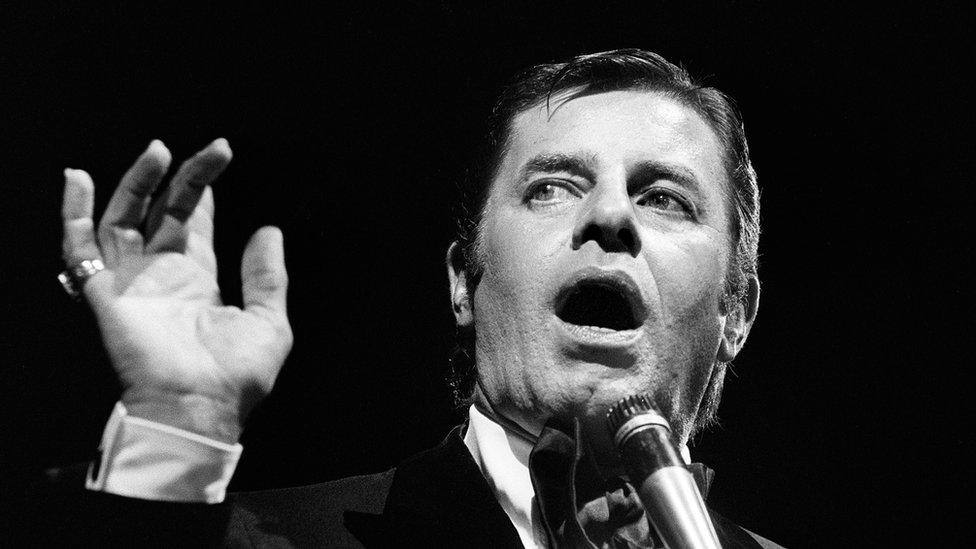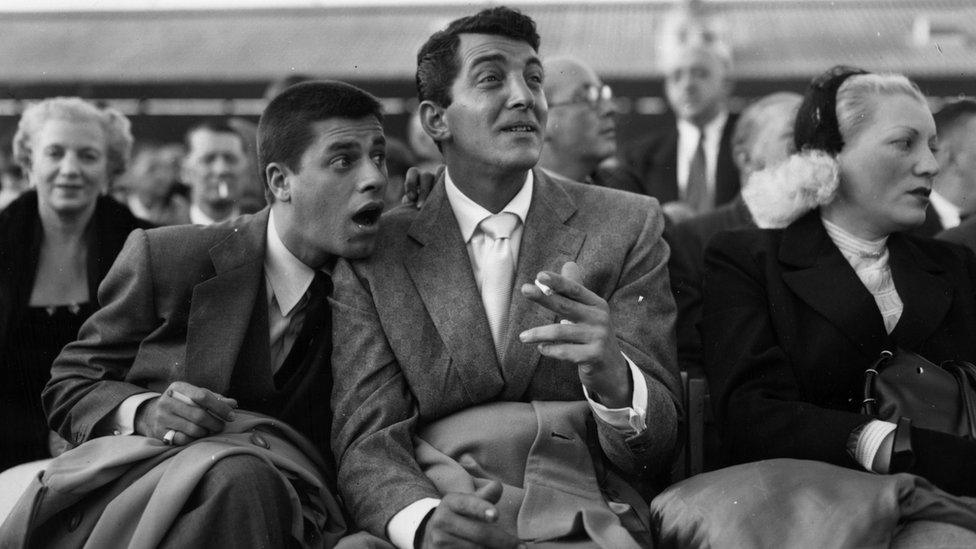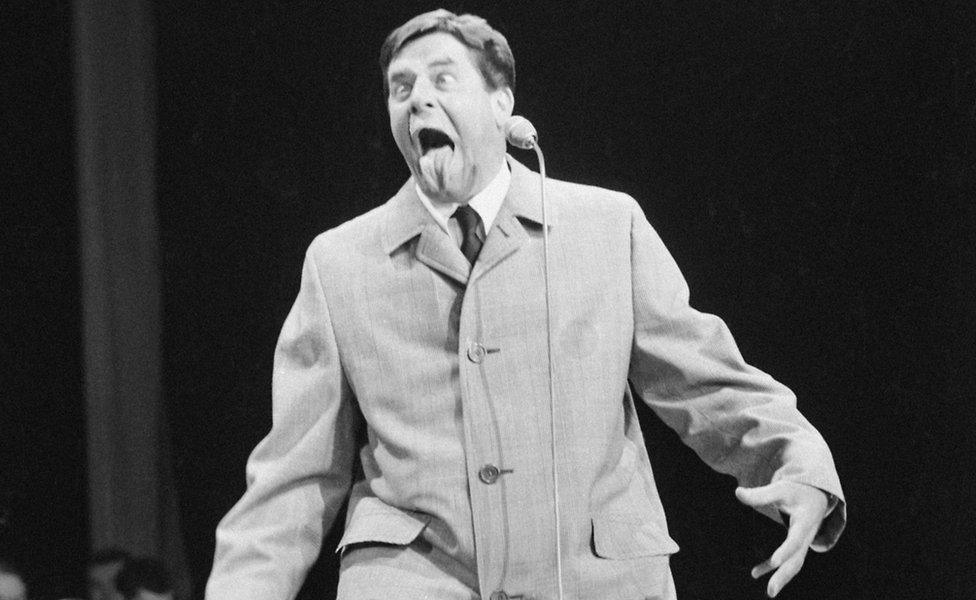Jerry Lewis: The master of the visual gag
- Published

Jerry Lewis has died in Las Vegas aged 91
Jerry Lewis' goofy comedies made him the world's best-paid movie star.
A master of the visual gag, his films - with their cartoon-like antics - became immensely popular.
His partnership with Dean Martin lasted for 10 years, spawning a string of successful films and live performances.
He also became well-known for hosting marathon telethons raising millions of dollars for charity.
He was born Joseph Levitch in 1926 in Newark, New Jersey, into a family of Russian Jewish emigres. His father was a vaudeville entertainer while his mother played piano in a radio station.
Following his stage debut at the age of five, he went on to play to great acclaim to audiences on the so-called Borscht Circuit, the collection of summer resorts in the Catskill Mountains that were popular with New York's Jewish families.
By 15, he had refined an act that involved exaggerated miming to records under the name Joey Lewis, which he later changed to Jerry.
He first found national success when he teamed up with an up-and-coming crooner called Dean Martin. The pair quickly became favourites on the nightclub circuit before branching out with their own radio show.

Lewis and Martin at a boxing event in London in 1953
Their combination of sophistication and slapstick brought a decade of success, during which they starred together in 16 films and became the number one box office success in America.
But their partnership, which Lewis likened to a love affair, ended in acrimony. The two men did not speak to one another for years after the split, though they were reconciled before Martin's death.
Lewis went on to sign an exclusive contract with Paramount Pictures, which made him the best-paid star in Hollywood.
He wrote, starred in, produced and even directed a series of comedy films including The Bell Boy, Cinderfella and The Nutty Professor, which broke box office records everywhere they played.
Many of his roles were based on the idea of a split personality. Lewis' innate ability to play a wide range of admittedly grotesque characters, was always at the core of his films.
To some, Lewis' performances were childish and simplistic. Others, including the French, who awarded him their highest decoration the Legion d'Honneur in 1984, considered him a genius.

Lewis filming his Holocaust movie The Day The Clown Cried, in Paris in 1972
Lewis took his comedy extremely seriously. Indeed, he taught for a time at the University of Southern California, where his students included George Lucas and Steven Spielberg.
His analysis was refreshingly simple, that "there is a thin line between comedy and tragedy and real comedy comes through exploring that line".
Lewis endured a number of setbacks including open heart surgery, prostate cancer and a bitter separation from one of his five sons.
In 1983, he thrilled as the talk show host stalked by Robert de Niro in The King of Comedy and, in 1995, played opposite the British actor and comedian, Lee Evans (whom many liken to Lewis) in the film Funny Bones.

Lewis on stage during the Royal Variety Show in 1966
He returned in triumph to the stage in 1995 as the satanic Mr Applegate in the musical Damn Yankees. It was a role that, at the time, made him the highest-paid star in Broadway history.
When the Weinstein Company made a CGI animated version of the Nutty Professor in 2008, Lewis lent his voice to the character of Professor Kelp, the part he had played in the original 1963 film.
For more than 50 years, he worked for the American Muscular Dystrophy Association and fronted their annual coast to coast Telethon. It was a partnership that ended somewhat abruptly in 2010.
Behind the clowning, Lewis was a complex character, some would say eccentric. He would, for instance, give suits away rather than have them cleaned and, like many perfectionists, could be egotistical and difficult to work with.
It is a measure of Jerry Lewis' many abilities, not just that he made it to the top during one of the most competitive eras in Hollywood history, but that he stayed there for half a century, still packing them close to the end.